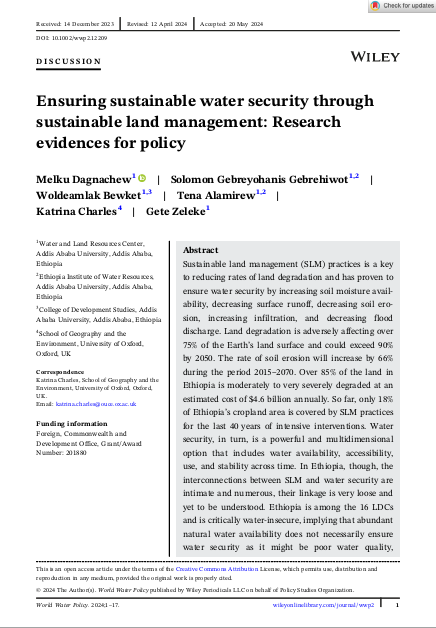Dagnachew, M., Gebreyohanis Gebrehiwot S., Bewket, W., Alamirew, T., Charles, K and Zeleke, G.
Sustainable land management (SLM) practices are key to reducing rates of land degradation, and are proven to improve water security by increasing soil moisture availability, decreasing surface runoff, decreasing soil erosion, increasing infiltration, and decreasing flood discharge. Land degradation is adversely affecting over 75% of the Earth’s land surface and could exceed 90% by 2050. The rate of soil erosion will increase by 66% during the period 2015–2070. Over 85% of the land in Ethiopia is moderately to very severely degraded at an estimated cost of $4.6 billion annually. So far, only 18% of Ethiopia’s cropland area is covered by SLM practices for the last 40 years of intensive interventions. Water security, in turn, is a powerful and multidimensional option that includes water availability, accessibility, use, and stability across time. In Ethiopia, though, the interconnections between SLM and water security are intimate and numerous, their linkage is very loose and yet to be understood. Ethiopia is among the 16 LDCs and is critically water-insecure, implying that abundant natural water availability does not necessarily ensure water security as it might be poor water quality, inaccessible, and unsafe. Hence, national and local level of SLM and water security linkages, impacts, and policy implications must come on board in the least developing countries like Ethiopia. Therefore, SLM-water security policy is crucial in successful SLM because governments/higher officials are capable of promoting well-informed water security decisions.

